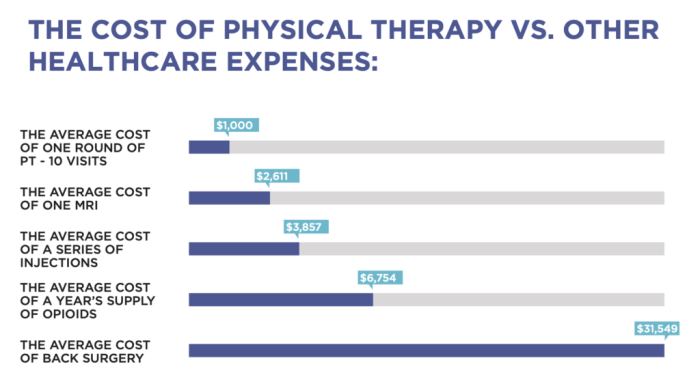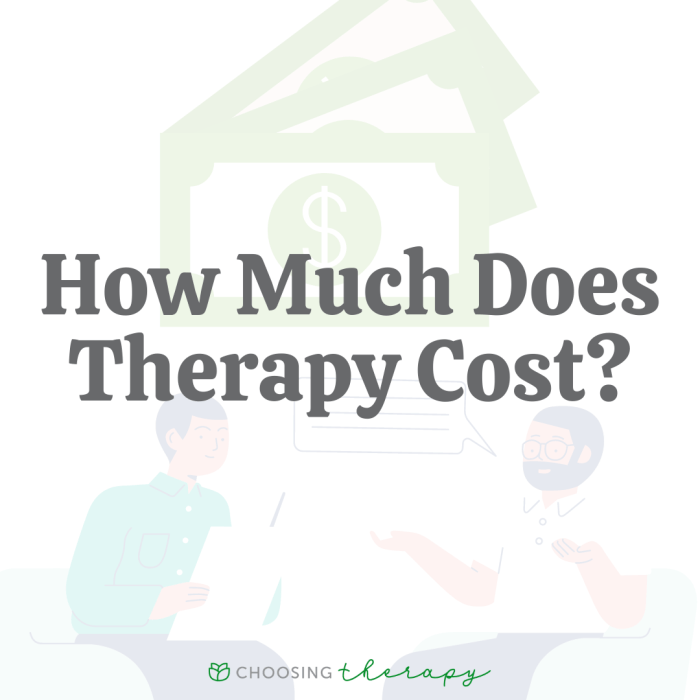Navigating the financial aspects of mental health treatment can be daunting, especially when insurance coverage is not an option. TIP therapy, a promising approach to addressing mental health concerns, is no exception. This guide aims to provide a comprehensive overview of what you can expect to pay for TIP therapy without insurance, covering various factors that influence costs, payment options, and strategies for managing expenses.
TIP therapy, or Trauma-Informed Psychotherapy, is a specialized form of therapy designed to address the unique needs of individuals who have experienced trauma. By understanding the cost structure and exploring available resources, individuals can make informed decisions about their mental health care journey.
General Costs of TIP Therapy

TIP therapy sessions typically range in cost from $100 to $250 per session without insurance. However, this cost can vary significantly depending on a number of factors, including the location of the therapist, the experience of the therapist, and the length of the session.
Variations in Pricing
- Location: The cost of TIP therapy can vary depending on the location of the therapist. For example, therapists in major metropolitan areas typically charge higher rates than therapists in rural areas.
- Therapist Experience: The experience of the therapist can also affect the cost of TIP therapy. Therapists with more experience typically charge higher rates than therapists with less experience.
- Session Length: The length of the TIP therapy session can also affect the cost. Longer sessions typically cost more than shorter sessions.
Out-of-Pocket Expenses
In addition to the costs covered by insurance, there may be out-of-pocket expenses associated with TIP therapy, depending on the individual’s insurance plan and coverage limits.
Common out-of-pocket costs include:
Copays
A copay is a fixed amount that an individual pays for a medical service, such as a doctor’s visit or a prescription drug. Copays for TIP therapy can vary depending on the insurance plan and the type of service provided.
Deductibles
A deductible is the amount that an individual must pay out-of-pocket before their insurance coverage begins. Deductibles for TIP therapy can vary widely depending on the insurance plan.
Coinsurance
Coinsurance is a percentage of the cost of a medical service that an individual is responsible for paying after meeting their deductible. Coinsurance rates for TIP therapy can vary depending on the insurance plan.
The total out-of-pocket costs for TIP therapy will depend on the individual’s insurance plan, the type of services provided, and the amount of copays, deductibles, and coinsurance that apply.
Payment Options

Understanding the various payment options available for TIP therapy can help you plan your financial approach and ensure accessibility to the treatment.
TIP therapy providers typically accept a range of payment options to accommodate the diverse financial situations of their clients. The most common payment methods include:
Cash
Cash payments are a straightforward and convenient option for those who prefer to pay in person. It eliminates the need for additional fees associated with other payment methods and ensures immediate payment to the therapist.
Credit Cards
Credit cards are widely accepted by TIP therapy providers, offering flexibility and convenience to clients. They allow for easy payment processing and provide a secure method for transactions. However, some providers may charge additional fees for credit card payments, so it’s essential to inquire about any potential fees before using this option.
Health Savings Accounts (HSAs)
Health savings accounts (HSAs) are tax-advantaged savings accounts designed to cover qualified medical expenses, including TIP therapy costs. If you have an HSA, you can use the funds to pay for TIP therapy sessions, subject to any applicable limitations or restrictions set by your HSA provider.
Additional Fees and Charges
In addition to the standard therapy fees, there may be additional fees or charges associated with TIP therapy. These may include:
- Late payment fees: Some providers may charge a late payment fee if you fail to pay your bill on time.
- Cancellation fees: If you need to cancel or reschedule an appointment, you may be charged a cancellation fee.
- Insurance co-payments or deductibles: If you have health insurance, you may be responsible for paying a co-payment or deductible before your insurance coverage kicks in.
It’s essential to discuss any potential additional fees or charges with your TIP therapist before starting treatment to avoid any unexpected expenses.
Insurance Coverage

TIP therapy, like many mental health treatments, can be covered by various insurance providers. Understanding your coverage options can help you determine the extent of your financial responsibility for TIP therapy sessions.
Private Insurance
Many private insurance plans provide coverage for TIP therapy. However, the specific coverage details can vary depending on your plan and the insurance company. It’s important to contact your insurance provider to confirm coverage and determine the extent of your coverage for TIP therapy sessions.
You may need to provide your insurance provider with information about your diagnosis and treatment plan to determine your coverage eligibility.
Medicare
Medicare, the federal health insurance program for individuals aged 65 and older, may cover TIP therapy under certain circumstances. Medicare Part B, which covers medically necessary outpatient services, may cover TIP therapy if it is deemed medically necessary by your healthcare provider.
You may need to meet certain criteria, such as having a qualifying mental health diagnosis, to receive coverage for TIP therapy under Medicare.
Medicaid
Medicaid, the federal-state health insurance program for low-income individuals and families, may also cover TIP therapy. Coverage for TIP therapy under Medicaid varies from state to state, so it’s important to check with your state Medicaid agency to determine your coverage eligibility.
In some states, Medicaid may cover TIP therapy for individuals with certain mental health diagnoses, while in other states, coverage may be more limited.
Verifying Insurance Coverage
To verify your insurance coverage for TIP therapy, you can contact your insurance provider directly or through your insurance company’s online portal. You can also contact your healthcare provider’s office to inquire about their insurance coverage policies for TIP therapy.
It’s important to provide your insurance provider with accurate and complete information about your diagnosis and treatment plan to ensure that your coverage is properly assessed.
In-Network vs. Out-of-Network Providers
TIP therapy providers can either be in-network or out-of-network with insurance companies. This distinction significantly impacts the cost of treatment.
Insurance Coverage
In-network providers have negotiated rates with insurance companies, meaning that they accept a lower fee for their services in exchange for being included in the insurance company’s network. As a result, in-network providers typically charge lower out-of-pocket expenses for TIP therapy compared to out-of-network providers.
Out-of-Pocket Expenses
Out-of-network providers, on the other hand, have not negotiated rates with insurance companies. They can charge whatever they want for their services, and insurance companies may not cover any portion of the cost. As a result, out-of-network providers typically charge higher out-of-pocket expenses for TIP therapy.
Impact on Cost
The difference in cost between in-network and out-of-network providers can be substantial. For example, an in-network provider may charge $100 per session for TIP therapy, while an out-of-network provider may charge $200 per session. This difference can add up quickly over the course of treatment.
Network Participation
If you are considering TIP therapy, it is important to check with your insurance company to see if the provider you are interested in is in-network. You can also ask the provider if they are willing to negotiate a lower rate for their services.
Sliding Scale Fees
Many TIP therapy providers offer sliding scale fees, which are fees that are based on a patient’s income and financial situation. This makes TIP therapy more affordable for individuals who may not be able to afford the full cost of treatment.
To inquire about sliding scale fees, you can contact the TIP therapy provider directly and ask if they offer this option. You may be asked to provide proof of income, such as a pay stub or tax return, to determine your eligibility for sliding scale fees.
If you are eligible for sliding scale fees, the amount you pay for TIP therapy will be based on your income and financial situation. The fee may be a percentage of your income, or it may be a flat fee that is lower than the full cost of treatment.
Group vs. Individual Therapy

TIP therapy is typically provided in either a group or individual setting. The cost of each can vary, with group therapy generally being more affordable than individual therapy.
Cost Differences
The cost of group TIP therapy is typically lower than individual TIP therapy due to several factors. First, group therapy allows the therapist to see multiple clients at once, which reduces the therapist’s time and overhead costs. Second, group therapy sessions are often longer than individual sessions, which allows the therapist to provide more therapy in a shorter amount of time.
Finally, group therapy can provide a sense of community and support that can be beneficial for clients.
Effectiveness of Group Therapy
Despite its lower cost, group TIP therapy can be just as effective as individual TIP therapy. In some cases, group therapy may even be more effective than individual therapy. This is because group therapy can provide clients with a sense of community and support that can be beneficial for their recovery.
Additionally, group therapy can help clients learn from and support each other, which can accelerate the healing process.
Online vs. In-Person Therapy

The cost of TIP therapy can vary depending on whether it is delivered online or in person. Online TIP therapy platforms typically offer more affordable rates compared to in-person sessions. However, it is important to consider the potential benefits and drawbacks of each delivery format before making a decision.
Cost Comparison
Online TIP therapy platforms often charge a monthly or annual subscription fee, which typically ranges from $50 to $200. This fee typically includes access to a library of self-help resources, such as videos, worksheets, and online forums. Some platforms also offer live video sessions with a therapist, which may cost an additional fee.
In-person TIP therapy sessions typically cost between $100 and $200 per session. The cost of therapy may vary depending on the therapist’s experience, location, and the type of therapy provided. Some therapists may offer sliding scale fees, which are based on the client’s ability to pay.
Benefits and Drawbacks of Online Therapy
Online TIP therapy offers several benefits, including convenience, affordability, and accessibility. Clients can access therapy from the comfort of their own home, which can be especially helpful for those who have difficulty traveling to a therapist’s office. Online therapy can also be more affordable than in-person therapy, as there are no travel costs or parking fees.
However, there are also some drawbacks to online therapy. One potential drawback is that it can be difficult to build a strong therapeutic relationship with a therapist online. Additionally, online therapy may not be suitable for clients who need more intensive support or who are struggling with severe mental health issues.
Benefits and Drawbacks of In-Person Therapy
In-person TIP therapy offers several benefits, including the opportunity to build a strong therapeutic relationship with a therapist and receive more personalized care. In-person therapy can also be more effective for clients who need more intensive support or who are struggling with severe mental health issues.
However, there are also some drawbacks to in-person therapy. One potential drawback is that it can be difficult to find a therapist who is accepting new clients. Additionally, in-person therapy can be more expensive than online therapy, as there are travel costs and parking fees associated with attending sessions.
Long-Term vs. Short-Term Therapy

The duration of TIP therapy can significantly impact the total cost of treatment. Long-term therapy typically involves more sessions and a longer duration, resulting in higher overall costs compared to short-term therapy.
Cost Implications
- Long-Term Therapy: Involves a greater number of sessions, spanning over several months or even years. This extended duration leads to a higher cumulative cost, as each session incurs a fee.
- Short-Term Therapy: Typically consists of a limited number of sessions, often lasting a few weeks or months. Due to the shorter duration, the total cost of short-term therapy is generally lower compared to long-term therapy.
Factors Influencing Duration
- Individual Needs: The duration of therapy is largely determined by the client’s individual needs, goals, and progress. Some individuals may require longer-term therapy to address complex or chronic issues, while others may benefit from short-term therapy for specific concerns.
- Therapist’s Approach: Different therapists may have varying approaches and treatment philosophies, which can influence the duration of therapy. Some therapists may favor long-term therapy to establish a strong therapeutic relationship and address deeply ingrained patterns, while others may prefer short-term therapy for targeted interventions.
Considerations for Clients
- Financial Planning: Clients should carefully consider their financial situation when choosing between long-term and short-term therapy. Long-term therapy may require a significant financial commitment, so it’s essential to assess affordability and explore payment options.
- Treatment Goals: Clients should discuss their treatment goals with their therapist to determine the appropriate duration of therapy. Short-term therapy may be suitable for addressing specific, time-limited issues, while long-term therapy may be necessary for more complex or chronic concerns.
Financial Assistance Programs

Individuals struggling to afford the cost of TIP therapy may be eligible for financial assistance programs or grants designed to help cover the cost of treatment.
These programs often have specific criteria and eligibility requirements, such as income level, insurance status, and diagnosis.
Applying for Financial Assistance
To apply for financial assistance, individuals should contact the organization or agency offering the program. Application processes may vary, but typically involve submitting a completed application form, proof of income, and a letter of medical necessity from a healthcare provider.
Eligibility for financial assistance is typically determined based on the applicant’s financial situation, insurance status, and the severity of their condition.
Common Financial Assistance Programs
- The Substance Abuse and Mental Health Services Administration (SAMHSA): SAMHSA offers a variety of grants and programs to support individuals seeking substance abuse and mental health treatment, including TIP therapy. These programs may provide financial assistance for treatment costs, as well as support services such as counseling and case management.
- The National Institute on Drug Abuse (NIDA): NIDA offers research grants and funding opportunities for studies related to substance abuse and addiction, including TIP therapy. These grants may provide financial support for individuals participating in TIP therapy research studies.
- State and Local Government Programs: Many state and local governments offer financial assistance programs for individuals seeking substance abuse and mental health treatment. These programs may vary by state and locality, but may include grants, subsidies, and tax breaks.
- Non-Profit Organizations: Some non-profit organizations provide financial assistance to individuals seeking substance abuse and mental health treatment. These organizations may offer grants, scholarships, or other forms of financial support to eligible individuals.
Final Summary

In conclusion, the cost of TIP therapy without insurance can vary significantly depending on several factors. By understanding these factors and exploring various payment options, individuals can navigate the financial aspects of TIP therapy more effectively. Additionally, seeking information about sliding scale fees, group therapy options, and financial assistance programs can help make TIP therapy more accessible and affordable for those in need.
Answers to Common Questions
What are the typical costs of TIP therapy sessions without insurance?
The cost of TIP therapy sessions without insurance can range from $100 to $250 per session, with variations based on factors like location, therapist experience, and session length.
Are there any additional out-of-pocket expenses associated with TIP therapy?
Yes, potential out-of-pocket expenses may include copays, deductibles, and coinsurance, depending on the type of insurance plan and coverage limits.
What payment options are commonly accepted for TIP therapy?
Various payment options are typically accepted, including cash, credit cards, and health savings accounts (HSAs). Some therapists may also offer sliding scale fees based on a patient’s income.
How can I verify my insurance coverage for TIP therapy sessions?
Contact your insurance provider directly or check your insurance plan documents to determine your coverage options and limitations for TIP therapy.
What are the cost differences between in-network and out-of-network TIP therapy providers?
In-network providers typically have negotiated rates with insurance companies, resulting in lower out-of-pocket costs for patients. Out-of-network providers may charge higher fees, and insurance coverage may be limited.



